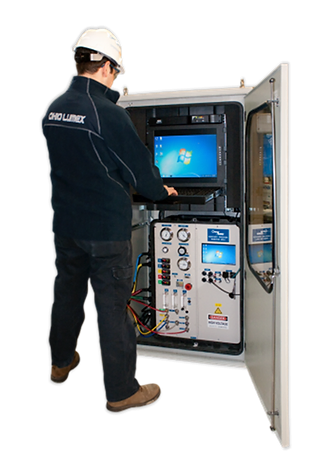In the lead up to MATS and NESHAP, many were able to achieve mercury reductions as a co-benefit of their existing control devices. Other plants installed control technologies to exclusively focus on Mercury Control such as activated carbon injection or FGD re-emissions chemicals. Some plants started injecting calcium bromide onto the coal for increased mercury oxidation and others turned to refined coal.
As the economy changes and current pollution control equipment ages, companies are adapting. Ohio Lumex is instrumental in this evaluation process and contribute to the optimization of new strategies. This blog series will focus on some of the patters we’ve seen.

But, with economics and aging pollution control equipment, strategies are continuously changing. As our customers change their strategies, we are often involved in the evaluation process of assessing what is not working or optimizing new strategies. We have been involved in some very interesting testing and have noticed some common patterns.
We are turning these patterns into a series of blog articles so we can share our experiences and encourage further discussion.

Pattern #1: High Hg upon Startup after a planned or unplanned outage…
This phenomenon is difficult to detect unless you separately sample sorbent traps during startup or have a Mercury Process Monitor which allows for you to see Hg concentration in real-time. We speculate that there are multiple reasons for this phenomenon. As ducts heats up slowly, residual Hg that has lined and accumulated along the surfaces begins to vaporize. This Hg eventually mixes with flue gas and is removed or emitted in the same fashion. Higher Hg could also be a matter of SCR or FGD equilibration. The chemistry of an SCR and FGD is complex.
Startup of the boiler causes drastic temperature fluctuations. For these operating conditions, an SCR bypass may (but not necessarily) be required to route the flue gas around the reactor chamber which would obviously hinder the ability for Hg to be oxidized. This bypass may also be used during low-load boiler operations which also can decrease the temperature at the SCR reactor inlet below the SCR operating range.
It should be noted that operational routines can be applied during SCR startup and shutdown that could preclude the need for a bypass. (source) We will discuss this in a future blog, but SCRs also run into many complications when operating at lower temperatures and when load is cycling or less than anticipated in the design of the SCR. As for FGDs, even during normal operations, they are not entirely in a “steady state.” However, an overall balance is reached at given loads, fuel, and equipment operations with regard to mercury within the WFGD liquor circuit and mercury entering and leaving the WFGD in the flue gas. Startup of a unit after outage is a unique condition and is impacted by things like the initial scrubber liquor charge and unit startup procedures.
In addition to startup, load swings also create unique conditions around the WFGD. Changes in sulfur dioxide content at the inlet resulting from fuel changes also impact WFGD scrubber chemistry. (source)
The BEST way to see the Hg emission changes during startup is to incorporate a Process Monitor into the startup process. These process monitors can be installed at your plant permanently or temporarily with a portable version. We have been installing our 915J Mercury Process Monitoring systems temporarily and permanently for almost 10 years. Currently, there are 130 monitors permanently installed in the USA operating continuously.
Contact us today for more details or if you would like to set up a DEMO.
Miss part of the series? Check out a few of our other blog posts on elevated Hg levels:

